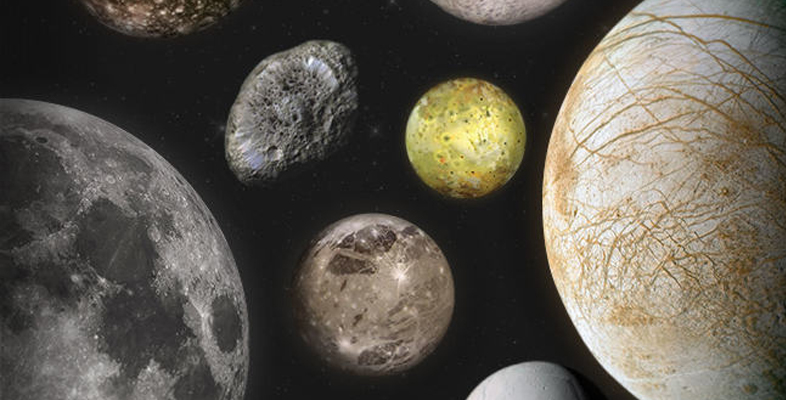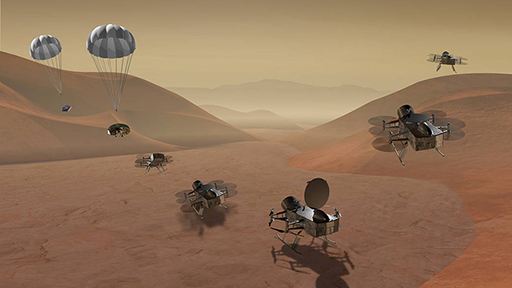1.5 Splashdown or flying on Titan?
You have seen how much moons vary around the Solar System. Each world has a different set of questions and challenges. Concept studies look at how we might overcome some of these challenges through engineering and what science we can gain.
The Titan Mare Explorer (TiME) concept study aimed to provide the first direct exploration of an ocean environment beyond Earth by landing and floating on a methane–ethane lake on Saturn’s moon Titan. TiME was under serious consideration by NASA until August 2011, when it was dropped in preference to a geophysical mission to Mars. The plan for TiME was to look for any similarities and differences with Earth and other Solar System bodies, as well as investigating the chemistry of the lakes. It is likely that a parachute descent system would be used to place the instrument on the liquid surface. Missions such as these could observe the surface chemistry and weather systems of unknown worlds.
Although TiME never made it, a mission that is now approved, with an intended 2028 launch and 2035 arrival is Dragonfly – NASA Science [Tip: hold Ctrl and click a link to open it in a new tab. (Hide tip)] , that will land and deploy a ‘quadcopter’ drone to fly in Titan’s dense atmosphere.

